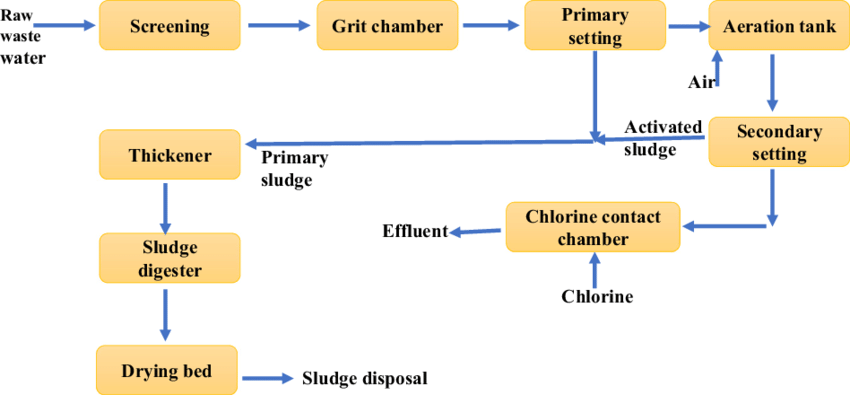Reclaim Waste Things To Know Before You Buy
Table of ContentsSome Ideas on Reclaim Waste You Need To KnowThe 2-Minute Rule for Reclaim WasteReclaim Waste Things To Know Before You Get ThisThe Reclaim Waste PDFsThe Best Guide To Reclaim Waste
Discover the kinds, incidents, and kinds of fluid waste. Domestic sewer waste describes the waste and items from a domestic septic system. This kind of waste is created by people in homes, colleges, and other structures. This only consists of septic systems that have a drainpipe field. The proper management and disposal of domestic sewage waste call for fluid waste to be moved to a sewage treatment plant where the proper techniques and tools are put on detoxify and get rid of waste.
Commercial waste typically includes prospective threats, such as flammable products or a mix of fluid and strong waste items, and needs a more sophisticated and in-depth disposal process. The disposal of industrial waste typically entails the purification of waste prior to transportation to make certain safe and appropriate disposal. Hazardous waste is created from byproducts and drainage of industrial procedures and manufacturing.
This kind of waste can not make use of the exact same sewer monitoring transport or processes as septic or industrial liquids. The hazardous waste monitoring process requires the assessment and testing of fluid waste prior to it undergoes the disposal process (liquid waste removal). Drainage waste is the fluid waste that originates from overflow and excess stormwater in very booming locations or cities
Runoff waste can cause contamination and flooding if not managed properly. Making sure appropriate waste management can prevent disasters and lower ecological injury.
The Reclaim Waste Ideas
Get in touch with PROS Providers today to discover regarding our waste management and disposal solutions and the appropriate methods to take care of the fluid waste you generate.
(https://trello.com/w/reclaimwaste1/)Do you recognize what occurs to your water when you pull the plug, purge the bathroom or drain pipes the washing maker? No? Well, it deserves recognizing. This so-called 'wastewater' is not only an important source but, after therapy, will certainly be released to our land, waterways or the ocean. Made use of water from commodes, showers, bathrooms, kitchen area sinks, washings and industrial processes is referred to as wastewater.

water used to cool machinery or tidy plant and equipment). Stormwater, a kind of wastewater, is runoff that streams from farming and urban locations such as roof coverings, parks, yards, roads, courses and rain gutters into stormwater drains, after rainfall. Stormwater moves unattended directly to regional creeks or rivers, ultimately reaching the ocean.
See This Report about Reclaim Waste
In Queensland, most wastewater is dealt with at sewage treatment plants. Wastewater is transported from residential or commercial sites with a system of sewage systems and pump stations, referred to as sewerage reticulation, to a sewage therapy plant. Neighborhood federal governments develop, keep and run most sewage therapy plants. Operators are certified under the Environmental Security Act 1994 to discharge cured wastewater at an acceptable environmental standard into rivers.
The Division of Natural Resources encourages local governments concerning handling, operating and maintaining sewage systems and therapy plants. In unsewered locations, neighborhood federal governments may call for homeowners to mount individual or house sewage therapy systems to deal with domestic wastewater from bathrooms, kitchen areas, shower rooms and washings. The Division of Natural Resources authorizes using home systems when they are verified to be efficient.
In some new subdivisions, therapy of some stormwater to remove clutter, sand and gravel has actually started utilizing gross toxin catches. Wastewater therapy occurs in 4 phases: Gets rid of strong issue.
Makes use of tiny living organisms understands as micro-organisms to damage down and remove remaining liquified wastes and fine bits. Micro-organisms and wastes are incorporated in the sludge.
The 5-Second Trick For Reclaim Waste
Nutrient removal is not readily available at all sewage treatment plants because it requires expensive specialist equipment. Clear liquid effluent produced after therapy might still include disease-causing micro-organisms - liquid waste removal melbourne.

A lot of wastewater flows into the sewerage system. Under the Act, regional federal governments provide approvals and licences for eco appropriate tasks (Periods) involving wastewater releases that could have a neighborhood influence.
The 2-Minute Rule for Reclaim Waste
Monitoring gives accurate information about water high quality and can validate that licence conditions are being satisfied. The info acquired through tracking offers the basis for making water high quality choices.